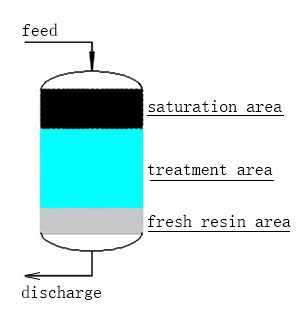产品展示PRODUCTS SHOW
首页>产品展示>Main technologies

Ion Exchange System 1
Automatic Multi-unit Continuous Ion Exchange System
1 Application
The multi-unit continuous ion exchange system with array valves is the most representative product of our company, and more than 30 sets have been using in many industries since 2016.
1) Water treatment
Ion exchange system is in great demand in the field of water treatment, mainly used for the removal of various anions and cations in water.
2) Food industry
Ion exchange system can be used in the industrial production of sugar, MSG, wine refining, biological products and so on. For example, in the manufacturing process of glucose,starch milk needs to be treated by ion exchange system after liquefaction,saccharification, deslagging and decolorization to obtain purity.
3) Petrochemical industry
In organic synthesis,acid and base are often used as catalysts for esterification, hydrolysis,transesterification, hydration and other reactions. Ion exchange resin has more advantages instead of inorganic acid and base. First, resin can be used repeatedly. Second, the product is easy to separate. Third, the reactor will not be corroded. Fourth,Itis environmentally-friendly. Last but not least, the reaction is easy to control.
4) Environmental protection
Many aqueous or non-aqueous solutions contain toxic ions or non-ionic substances, which can be recycled by ion-exchange systems, such as removing metal ions from electroplating wastes and recovering useful substances from film production wastes.
5) Other
The ion-exchange system can separate, concentrate and purify uranium from depleted uranium. What’s more, it is used to extract rare earth elements and precious metals.
At present, the multi-unit continuous ion exchange system with array valves is mainly used for starch sugar production,and has become necessary. But we have to improve the system in order to gain market share in other areas.
2 Structure
The multi-unit continuous ion exchange system with array valves consists of a number of ion exchange columns whose structure are simple (Fig 2-1 and 2-2), and its functions depending on the type of resin being filled inside.


FIG. 2-1 Elevation view FIG. 2-2 Cutaway view
Ion exchange is used for deashing and discoloration or adsorption in starch sugar and fermentation industry, has been irreplaceable of purification processes. Traditional ion exchange system consumes a large amount of chemicals and deionized water, the resulting waste water is difficult to treat. By contrast, the multi-unit continuous ion exchange system with array valves can better meet the market demand.
Table 2-1 The development process of ion exchange technology and equipment
Improvement measures | Result obtained |
Strainer or sieve tube distributor instead of quartz sand filter | Improve rate and effect of the system (1) Reduce the resistance. (2) Improve the backwashing flow, and conditions for air scrubbing |
After the classification, part of the water is recycled and comprehensively utilized. | (1) Increase water use efficiency, reduce water consumption and sewage |
Excessive waste acid and alkali recycling (some are recycled by staged operation, others are recycled by membrane filtration). | (1) Reduce the consumption of chemical auxiliaries (2) Reduce the load of sewage treatment |
Automation control | (1) Automatic control of process parameters including flow, liquid level, concentration, etc. (2) The operation of each step in the process is programmed. Thus, reduce the influence of human factors in manual operation. |
Multi units in the system | (1) The complex operations that the resin system was divided into multiple units were carried to achieve comprehensive utilization of water and chemicals. Finally, these were saved a lot. (2) Continuous operation is realized by multi-unit complex control (3) Multi-unit continuous operation shortens the resin cycle time and greatly improves the utilization of resin. (4) The product obtained is possessed of high quality and superior stability. |
3 How the multi units system appears to work
The following is the process of fixed bed in ion exchange. Fig 3-1 is a diagram of the ion exchange process in a typical fixed bed.

Fig 3-1 A schematic diagram of the ion exchange process in a typical fixed bed.

【上一个】没有了
【下一个】 Ion Exchange System 2






